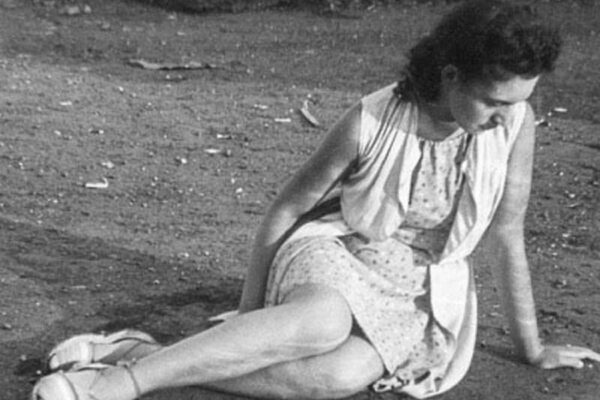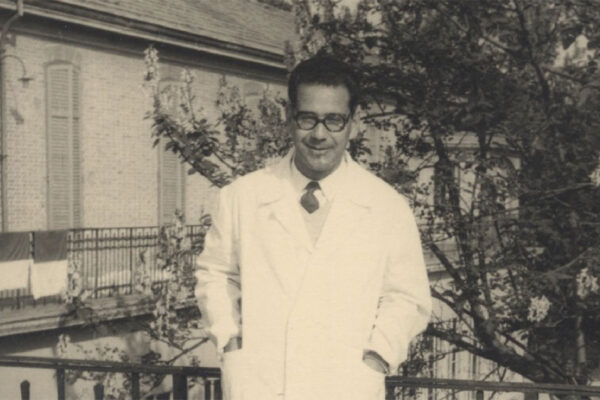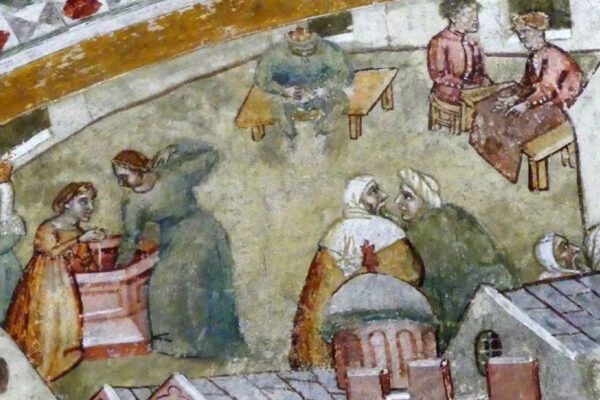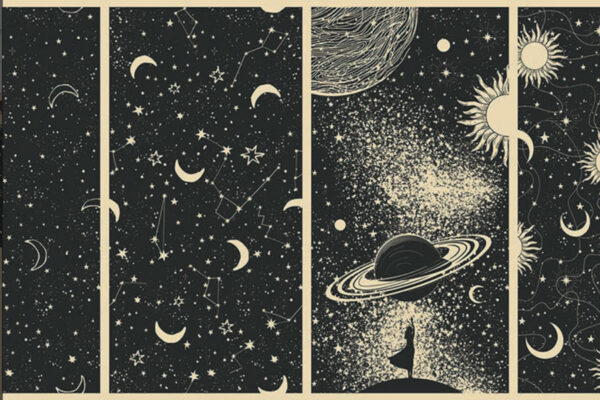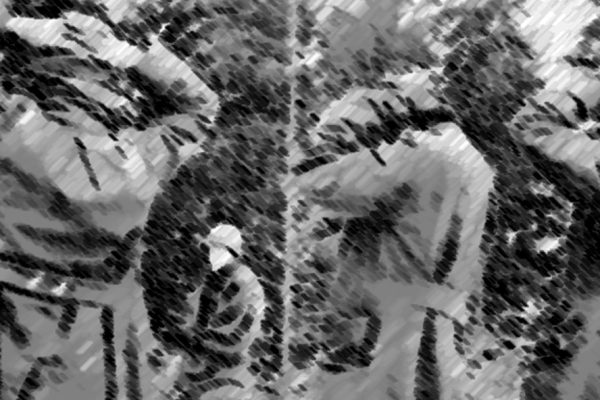First Readings of The Complete Works of Primo Levi: A Summary of a Broad Range of English-Language Press Reviews
This new, carefully assembled English edition of the works of Primo Levi is the achievement of Robert Weil and Ann Goldstein, and their collaborators at Liveright. The original titles have been restored, and the collections of stories and essays, previously available only in incomplete and piecemeal fashion, have been returned to their original formats, as Levi had wanted them. The books are arranged chronologically, according to the dates of their first publication. It is as if a capable and patient hand had finally rectified the disfigurements produced by decades of editorial vicissitudes.
An essential goal of this edition was a uniformity and coherence of tone and voice, allowing readers to experience fully the nuances of a language that is crystal clear but has a rich variety of tones. To that end Levi’s works that had already been translated into English were scrupulously retranslated, and stories and essays that had not been translated before were translated. As a result of the new translations, the language itself has re-acquired the crucial importance that Levi wished to give it. Even in a language that is not Italian, we can now clearly see the freedom of Levi’s choices, his rich linguistic heritage, and the distinctiveness and variety of his registers. Indeed, the translation has almost managed to become part of the author’s works, adding new levels of meaning to Levi’s own engagement as he closely followed the translations of his works into other languages and as a practitioner of the craft of translation himself.
The new volumes have received near-unanimous critical appreciation, along with some insightful suggestions and criticisms (20, 27, 29, 31, 32), which will undoubtedly be useful for a subsequent edition. Mainly, though, The Complete Works have been recognized as an important achievement, offering readers, in total, some three thousand pages of autobiography, stories, reflections, essays (many of them topical), and poetry. At last, as one critic noted (19), Levi’s quiet voice has been rendered clearly, phrase by phrase, and recognizable, as if it were speaking just a few inches from our ear, fluently adjusting its expressive capacities to fit the most varied situations: the concentration camp, chemistry, great feats of engineering, science fiction, mountain hikes, puns, interviews with imaginary animals, the invention of virtual machines.
The biography and the works
The publication of an author’s complete works can confirm a canon or can call into question confirmed interpretations (24). In the case of Levi, if we consider the initial reactions of the press, principally American, signs of change seem to be more prevalent, in two directions in particular.
First, the central role that the new edition gives to the works—to all the works, in their indisputable unity (2)—refutes, in a sense, the more common critical perspective of the past, which preferred to emphasize the author’s biography, a perspective whose limitations are now beginning to emerge. Reviewers who have continued to examine the books according to the chronological order of publication, connecting them to events in his life, risk making predetermined and rigid interpretations, whereas the more up-to-date criticism—which the new edition’s Notes on the Texts, edited by Domenico Scarpa, have drawn on—demonstrates that Levi’s various books matured and developed along different and much less linear pathways than was formerly believed; most important, those pathways constantly overlapped and intersected in the author’s mind.
Thus when certain of Levi’s thematic or stylistic choices are traced back to contingencies or to presumed psychological motivations, the disproportion between the often random and hypothetical nature of the cause and the importance of the effect is striking (14). We get the impression that the rigid, unilateral nature of that process of explication—simplistic and arbitrary at the same time—replaces a deeper and yet essential study of the relationship between the development of a particular work and the more general context. Yet such a process, which we might call strictly etiological, has two paradoxical results. First, in the attempt to bring to light, using psychological tools, unknown lands—lands that not even the author himself was fully aware of—it creates a climate of near-suspicion and mystery around the figure of Levi, which clashes with the affectionate respect that he almost universally inspired. Second, this approach, by trying to find concrete and comprehensible reasons for each of Levi’s choices, leads to another form of suspicion: in this case directed toward those who emphasize the wealth and complexity of Levi’s work, and are thus accused of yielding to a naïve form of hagiography that lacks the necessary realism and distance.
The way critics have treated Levi’s suicide offers a good opportunity to test what has just been said. In the past there was a strong temptation to ground most of his personal acts and circumstances (and therefore his literary production) upon this single fulcrum. In the reactions to the Complete Works, however, this attitude has for the most part changed. Furthermore, in the reviews the works have definitely acquired an autonomy of their own, to the point that one critic wrote (17), in a concise and unequivocal comment on Levi’s premature death, that those three thousand pages of text were tragically few.
The story of the concentration camp
We now come to the second change of direction. The fact that the innumerable facets of Levi’s work emerge in a potent manner from those three thousand pages helps to dispute the idea—still current (18) but in the past predominant, both in Italy and abroad—that Levi’s real worth consisted exclusively or almost exclusively in his extraordinary writing about Auschwitz. Before presenting evidence of this transformation, however, we should look at the way in which the figure of Levi as a Holocaust writer appears to have changed.
To begin with, strikingly little significance is given to the contrast between Levi and Elie Wiesel, an issue that came up insistently in the past. Wiesel’s testimony, much better known in the United States, was appreciated for its poetic and spiritual value, especially because of the clearly Jewish perspective that inspired him. Levi’s testimony, on the other hand, was admired mainly for its value as a factual record and for its evocation of the humanistic tradition. For a long time the Italian Levi seemed more distant from and almost extraneous to the American cultural scene. It is no accident that, when he visited the United States, in 1985, despite his success at the time, he had to reckon with the category of the “Jewish writer,” even though he didn’t recognize himself as such; it was a category that then was much in vogue and which now has almost disappeared from the lexicon of reviewers. Today the climate seems very different. The image of Levi as an assimilated Jew, and therefore insensitive to the mainly Jewish dimension of the Holocaust—made famous thirty years ago in Commentary—was not taken up in reviews of the Complete Works.
Rather, an increasing number of critics and commentators seem to prefer the way Levi recounts the realities of deportation: calmly, without rage or rancor, in a manner considered better able to withstand the test of time and to engage with future generations. There is also evidence among reviewers of a widespread sympathy with Levi’s perspective, even leading some to criticize serious misunderstandings, such as characterizing Levi as a “dispenser of forgiveness” (5). On the other hand, one may at times have the impression that less knowledgeable journalists and intellectuals, encountering Levi for the first time in the Complete Works, have offered some hasty and questionable judgments—but this is also a sign of the times.
In general, however, the ability to follow Levi’s path from If This Is a Man to The Drowned and the Saved, in its entirety, and with indisputable ease, allows us to observe more clearly not only the witness but, in particular, the analyst of the Shoah, the intellectual and thinker. This path can have different emphases. For example, regarding the concept of the “gray zone,” some reviewers have interpreted Levi’s thought correctly (17), rejecting the idea that the seductive force of Nazi power put the wrongs of the persecutors and those of the victims into the same category, whereas others have turned the ambiguities of the concentration camp into ambiguity on the part of the writer who seeks to investigate its deepest recesses (22). No reviewers have failed to appreciate the forceful concreteness with which Levi depicts the realities of Auschwitz, although at times one glimpses some disappointment at the fact that the work contains no hint of any plausible theory that might explain so much evil, and give the reader a moment of relief.
Even when Auschwitz is the main topic of a review (which is generally the case), the boundaries of the discussion tend to be vague. After all, Levi’s fame in the United States was established, in the mid-1980s, not by If This Is a Man or The Truce but by The Periodic Table, that astonishingly original interweaving of chemistry, literature, and autobiography. This fact has to be taken into account when we consider that today much more attention is paid to the subject of the concentration camps, owing to the vastly increased sensitivity of the past thirty years. Before Levi was discovered as a writer about the concentration camps, many readers knew him simply as a great writer. Now we are starting on a new journey, in which the concentration-camp writer can be more fully appreciated thanks to the discovery and availability of his other writings (24).
Itineraries through Levi’s works
Now we come to the subject I mentioned earlier: the various ways in which the first critical comments on the Complete Works have tended to erase boundaries between the works that are specifically about the concentration camps and the rest. This is a result of finding pathways through the works that will— I think—lead to new discoveries. For example, many reviews have paid unusual attention to the science-fiction stories. Some have judged them minor works (19), while others have expressed admiration for such texts as “Versamine” and “Angelic Butterfly,” observing close ties, although in a very different register, to Levi’s reflections on Auschwitz (1). Still others have gone further, seeing in the science fiction (or technological fiction) Levi’s ability to demonstrate, by means of brilliant distortions, that the Nazis were not the only ones who refused to acknowledge other human beings as human, and that violation of the moral order is always contagious (23).
In order to open new pathways it can also be useful to discuss the literary value of specific works, as many reviewers have done, citing and explaining their preferences. Those who discuss the interweaving of literary and moral virtues (18) have generally admired the books on the extermination, including The Truce. Others have been struck by Levi’s ability to inspire and captivate readers through a purity of style combined with a detached yet powerfully evocative prose (8). The perspective broadens and there is a more unconditional appreciation when reviewers focus on the variety of literary genres that Levi successfully exploited, especially the short essay, his favorite form (24); or when literature is seen as the essential tool used by a great thinker to represent a radical sense of the ambiguity and uncertainty of the human condition, and to describe its infinite open-endedness (15). And when one considers the fragility of human beings as a central theme, the horizon of what is valuable extends far beyond the canonical texts about Auschwitz. One reviewer has gone so far as to compare the effect of reading Levi’s works one after the other to “walking around the Uffizi galleries in Florence, readjusting [one’s] expectations and experiences from room to room.” (10).
If we wish to go deeper into Levi’s ethical vision, we can discover other, equally interesting pathways through his works, but the key here doesn’t seem to be the Levi who is seen primarily as a defender of the dignity of human beings (16). Rather, the picture is blurrier and more contradictory, and we should look for other routes. In this regard, one of the most interesting reviewers suggests an evocative itinerary. He writes that for the author of the Complete Works, nothing is neutral; even science does not function outside a system of values. Yet morality does not consist in a body of rules and laws imposed from outside; it’s a question of facts, not of opinions. And it is the facts that we always have to investigate. In the concentration camp, as in the scientific laboratory, to lose sight of ethics is to lose sight of reality. When the Nazis presumed to reduce individuals to things, or, as with the Jews, to representatives of a category, an inferior one, they were progressively taking leave of reality (17)
A single voice
The references to the hard sciences in Levi’s works can also help us discover meaningful pathways and connections. In the reviews that came out immediately after the publication of the Complete Works, references to science appear only fleetingly, as in the observation that chemistry helped Levi develop specific mental habits, or that the distinctive concreteness of the writing is rooted in his scientific training, or in noting the original equilibrium between art and science that Levi achieved in some of his writings (11). The widespread success of The Periodic Table in its time may have in part diminished the impression that Levi’s works bring readers something new. Nevertheless, reviewers have noted the many dimensions of it that come together to situate him at the crossroads of chemistry, morality, linguistics, history, psychology, philosophy, and other fields: in a place, that is, where the tenuousness of unilateral, predetermined points of view and, even more, the rigidity of academic boundaries stand out clearly.
Still, the question of what gives shape and unity to Levi’s voice remains open. As we have seen, it is neither a theory nor a system of values but, rather, a kind of concrete practice, a way of being and of presenting himself to his interlocutors day after day. One reviewer sees in The Periodic Table a virtuoso encounter between wisdom, memory, history, matter, and spirit, arranged in many different registers (19). Others have defined Levi as one of the greatest chroniclers of modern industrial society, because of his attention to the concentration camp, to a war-ravaged Europe, and to the world around him—one who, like Dante, had the fate of being remembered more for the Inferno than for the Paradiso (1).
An interesting idea proposed in one review is to examine the relationship between the “ordinariness” of Levi’s approach to the world—even in extreme conditions like the concentration camp—and the attention he gives as a writer to ordinary situations and people, and to look there for one of the keys to explaining the unified character of his work as a whole (2). Others have traced his outlook on the world and the clarity of his language to the Enlightenment tradition. Yet perhaps the sharpest insight, and one that deserves further consideration, comes from a reviewer who wrote of Levi as a Renaissance man (10). Endowed with a deep, wide-ranging curiosity, Levi wanted to be a complete human being, knowing, at the same time, that the struggle to be human never ends (15). The Complete Works represent the tangible evidence of his long, anguished commitment, and, precisely for that reason, many believe that its three thousand pages can help others, through the generations, move with the same intent.
Fabio Levi
Centro Internazionale di Studi Primo Levi – Torino
- Ramon Glazov, “Horrors and Joys”, The Monthly, September 2015.
- David McConnell, “An Ordinary Witness: On the Complete Works of Primo Levi”, Bookslut, September 2015.
- Toni Morrison, “Toni Morrison on Primo Levi’s Defiant Humanism”, The Guardian, 5 September 2015 (preview of Toni Morrison’s Preface to CW).
- Louis Begley, “A Lifetime Spent Bearing Witness”, The American Scholar, 7 September 2015.
- Martin Green, “The Complete Works of Primo Levi”, Jewish Book Council, 19 September 2015.
- Adam Kirsch, “Primo Levi’s Unlikely Suicide Haunts His Lasting Work”, Tablet Magazine, 21 September 2015.
- Michal Dirda, “The Complete Works of Primo Levi: A Literary Treasury on Humanity”, The Washington Post, 23 September 2015.
- James Wood, “The Art of the Witness”, The New Yorker, 28 September 2015.
- Steven G. Kellman, “Primo Levi’s Invaluable Voice, in Full”, The Chronicle of Higher Education, 28 September 2015.
- Joseph Farrell, “This Is Quite Some Man”, The Herald, 3 October 2015.
- John Timpane, “Collected Works Makes Case for Primo Levi’s Singular Art”, The Philadelphia Inquirer, 4 October 2015.
- Tim Parks, “Looking for Primo Levi”, The New York Review of Books: NYR Daily, 20 October 2015.
- Robert Fulford, “How the Nazis Accidentally Turned Primo Levi into a Philosopher and a Much-loved Author”, National Post, 26 October 2015.
- Tim Parks, “The Mystery of Primo Levi”, The New York Review of Books, 5 November 2015.
- Sam Magavern, “The Complete Works of a Haunting 20th Century Master”, The Buffalo News, 15 November 2015.
- Jerome A. Chanes, “Taking The Full Measure Of Primo Levi”, The Jewish Week, 18 November 2015.
- Edward Mendelson, “Bearer of Witness,” The New York Times Book Review, 29 November 2015 (Italian translation: “Il rigore scientifico di Primo Levi”, Internazionale, 18 December 2015).
- William Deresiewicz, “Why Primo Levi Survives”, The Atlantic, December 2015.
- James Marcus, “Free but not Redeemed,” Harper’s Magazine, December 2015.
- James Marcus, “Mission Impossible: The Perils of Translating Primo Levi”, The Harper’s Blog, 9 December 2015.
- Gavin Jacobson, “Primo Levi, Mountain Rebel”, New Republic, 15 December 2015.
- Edward Rothstein, “The Tragedy of Survival”, The Wall Street Journal, 23 December 2015.
- Joanna Bourke, “Primo Levi: A Life Shaped by Darkness”, Prospect Magazine, January 2016.
- Robert S. C. Gordon, “Hard Labor: On the Complete Works of Primo Levi”, Public Books, 15 January 2016.
- Franco Baldasso, “Paying Attention Like Primo Levi: an interview with Ann Goldstein”, Public Books, 15 January 2016.
- Thane Rosenbaum, “Primo Levi’s Pertinence in Today’s Mad, Mad World”, Haaretz, 18 January 2016.
- Tim Parks, “In the Tumult of Translation”, The New York Review of Books: NYR Daily, 19 January 2016.
- Jeremy Rosen, “The Collected Works of Primo Levi, edited by Ann Goldstein”, The Algemeiner, 1 February 2016.
- Tim Parks, “A Long Way from Primo Levi”, The New York Review of Books: NYR Daily, 2 February 2016.
- “A Three-volume, 3,000 Page Compilation Celebrates the Prolific Work of Primo Levi”, The Jerusalem Post, 18 February 2016.
- Tim Parks, “The Translation Paradox”, The New York Review of Books: NYR Daily, 15 March 2016.
- Michael F. Moore, “The Minefield of Primo Levi: An Exchange”, The New York Review of Books: NYR Daily, 28 March 2016.
- Ian Thomson, “The Ethics of Primo Levi”, The Times Literary Supplement, 1 June 2016.
- Matt Nesvisky, “Much More Than a Holocaust Survivor and Memoirist”, The Jerusalem Post, 18 August 2016.



